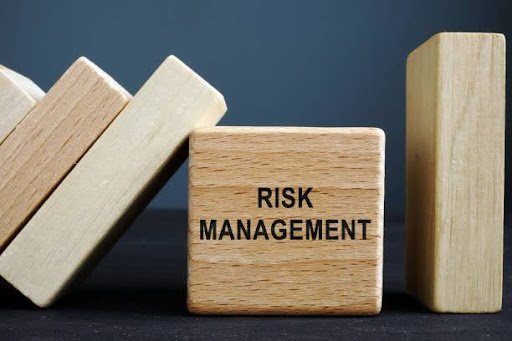The ever-evolving digital business environment has allowed cybercriminals to adapt new techniques to launder money from one place to another. To compete with the money laundering scams associated with digital transactions, organizations must strive for anti-money laundering (AML) regulatory checks.
The AML risk management market is expected to accumulate a $230 million share by the end of 2023. The anti-money laundering checks are no longer limited to maintaining regulatory compliance, but they also facilitate real-time risk management and financial reputation success. Additionally, these checks protect financial institutions from money laundering and related fraudulent activities.
This blog explores how AML risk management overcomes the money laundering challenges and examines the significance of various anti-money laundering components.
Scope of AML Risk Assessment – A Glimpse into the Risk-Based Identification Approach
AML risk management is the practice of assessing and eliminating the threats related to money laundering and related financial scams. The anti-money laundering modules, in association with a KYC-compliant authentication framework, enable the organizations to develop a risk-based approach.
These approaches are pivotal for mitigating money laundering attempts. Moreover, financial risk management evaluates the different risk profiles of potential customers and businesses.
Risk Management Process – A Three-Step Guideline
An impactful AML risk management process is operated through a series of steps, which ensures effective identification and elimination of money laundering practices. The three critical steps are discussed below:
- The first step of an effective AML risk management process is an extensive analysis of the customers’ transactional details and the business profiles of an organization’s beneficial owners. This allows the financial examiners to classify the customers into different risk-based categories.
- The next step stresses the mitigation of money laundering practices. Here, an enhanced due diligence measure is adopted, which focuses on the evaluation of the KYC procedures implemented by the financial institutions.
- In the last step, AML risk management modules are used to evaluate the client’s identities through sanction, PEP, and adverse media screening. The evaluation of these lists ensures a thorough analysis of customer’s risk profiles, which leads to lower money laundering instances.
AML Regulatory Challenges During Real-Time Risk Management
The development and implementation of an effective AML risk management framework helps organizations identify and overcome several challenges that disrupt the stability of an economy. Some of the most recurring challenges faced during the AML risk assessment process are examined below:
- Evolving Regulations: The anti-money laundering laws are constantly updated and modified to keep track of the latest legal developments and regulations. Therefore, a consistent, ongoing monitoring framework is crucial for ensuring adherence to these changing requirements.
- Inconsistent Risk-Detection: The comprehension of the customer’s changing risk profile often leads to inaccurate identity and financial analysis, leading to money laundering practices. The rectification of such practices require the financial institutions to use automated screening modules to assess customer’s transaction and financial histories.
- Infrequent Profile Updates: The infrequent updates in a customer’s industrial and business portfolios makes their ID verification process complex and inaccurate. Therefore, a financial institutions must maintain regulatory databases to keep up with the varying information of customers and clients.
- Inconsistent Privacy Concerns: Usually, the extensive collection of customer’s confidential information leads to privacy concerns as it leads to data breaches and identity theft. Therefore, AML risk management services offer protected and secured identification modules, which protect the customer’s confidential information from illegal access.
Key Components of Effective Online Risk Management Framework
The AML risk management procedures serve a crucial role in ensuring fraud-preventive and risk-free financial institutions. Some of the key components of an effective AML risk assessment operation are briefly analyzed below:
| Customer Identification Program (CIP) | Global risk management checks stimulate the CIP process as they ensure precise analysis of customers’ identity profiles to prevent high-profile entities from accessing financial institutions. |
| Malicious Activity Reporting | The continuous reporting of the suspicious financial activities help the businesses deteriorate the illicit transactional concerns, preventing recurring money laundering and terrorist financing activities. |
| Internal Financial Controls | This component prompts the financial institutions to set up some boundaries and protocols, which stimulates the identification and reporting of suspicious financial practices. These policies ensure that all the transactions are recorded in real-time. |
| Risk Assessment | The risk-assessment framework helps the organizations identify and tackle all the weaknesses that are observed in the AML compliance programs, which ensures stability in an economy’s financial structure. |
Wrapping Up:
AML risk management is essential for an economy’s financial structure to maintain and adhere to the regulatory bodies. These operations help the businesses and financial institutions identify and combat the money laundering and terrorist financing concerns. An effective anti-money laundering risk management framework ensures an extensive analysis of the customer’s IDs.
Additionally, these procedures prompt businesses to screen the customers against several watchlists, mainly PEP, sanction, and adverse media lists. A detailed analysis of these lists helps businesses evaluate whether an individual is a legitimate or a high-risk entity.
Also, read: Navigating the Potential of Digital Footprint Checker in Cybersecurity





One thought on “Identify Transaction Threats With AML Risk Management”